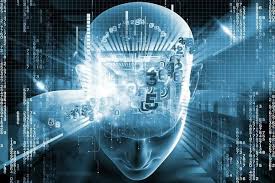Source – techtarget.com
We’re all aware of how powerful companies would become if they had such a technology in their hands, with its added benefits allowing them outpace the competition, get more business or raise more capital — it’s easy to see why everyone is claiming to have it. And with both the average person (and sometimes, even the more tech-savvy person) viewing the highly sophisticated software as the turning point to our intelligence-driven future, why wouldn’t it be called AI?
There’s a catch — true artificial intelligence does not exist and will not exist for at least a decade, even though the AI industry is predicted to be worth nearly $3 billion this year alone. Because of this reality, it begs the question: If we aren’t currently experiencing true AI, then how can we categorize the current state of advanced algorithms and technology? The answer is simple. Right now, we’re living in the era of augmented intelligence.
What exactly is augmented intelligence?
From the surface, augmented intelligence looks nearly identical to artificial intelligence, but there is one major difference: There’s a person, like a programmer, pulling the strings behind the scenes in each and every possible scenario the AI program may need to act upon or telling the computer how it needs to learn. While machines using augmented intelligence can often act and react like humans, these actions are only based on human inputted information. In other words, and in very simplistic terms, a software developer inputs several “if this, then that” scenarios and creates a near-real-world reaction that a machine is able to act upon. Even when using advanced machine learning, a developer is inputting the logic of learning and the reasoning behind it. The key factor that makes this intelligence augmented is the ongoing manual intervention which dictates how, if and when a machine reacts.
What qualifies as artificial intelligence?
Artificial intelligence can be defined as the creation of a machine that can replace and perform tasks that normally require human intelligence and reasoning. Robots today can replace many human tasks, however, the most critical pieces that define true artificial intelligence are the main traits that create human reasoning or logic (beyond knowledge): morals and ethics.
First, an artificially intelligent machine should have morals, meaning it must be able to define for itself right from wrong within the context of its situation, position, place in the world and more. For example, if an autonomous vehicle is tasked with a scenario where it must put either one or multiple lives at risk, it must be able to make a decision in the blink of an eye. This decision, which takes multiple real-time elements and considerations into account, includes “living” (or not) with the consequence of that very decision.
Next, this technology must have its own set of ethics that governs its behavior and learns from its experiences. Principles, that while guided, are self-imposed and self-governed. For example, if a search-and-rescue drone can fulfill a non-life-threatening but critical job while imposing on someone else’s privacy or property, should it do so? And should there be consequences if the drone breaches privacy but no one knows?
While logic, in its most basic state, can be programmed into a machine (i.e., if this happens, then this is the appropriate response), true logic is deeply rooted in both morals and ethics that drive the machine — no pun intended— and are learned and instilled in each human throughout their lifetime, backed by generations that came before them and thousands of years of culture. In order for authentic artificial intelligence to take form, machines or bots powered by this revolutionary technology will need to meet these qualifiers to start “thinking” for themselves to match basic human instinct and reasoning. In fact, true artificial intelligence means the machine can change its morals and ethics with time and experience, and perhaps even act against them if the situation calls for it. And if this indeed becomes reality, where machines can act like humans and work against their own preprogrammed ethics, any attempt to limit its behavior or outcome will be futile.
Now, when will we reach the era of true artificial intelligence?
Despite its newfound reputation as the industry golden child, there has still been no instance of true artificial intelligence. While augmented intelligence has masked itself as artificial intelligence in a few instances, like when it was reported Facebook decided to shut down its experimental AI bots because they had created their own language, there was always a “Great and Powerful Oz” figure behind the machine. This speculation and vision of a futuristic world, where artificial bots think for themselves and live among us in everyday, is likely quite some time away, so don’t expect to see Chappie walking down the street anytime soon. Moreover, when it happens, do we really think we will be able to control it?
